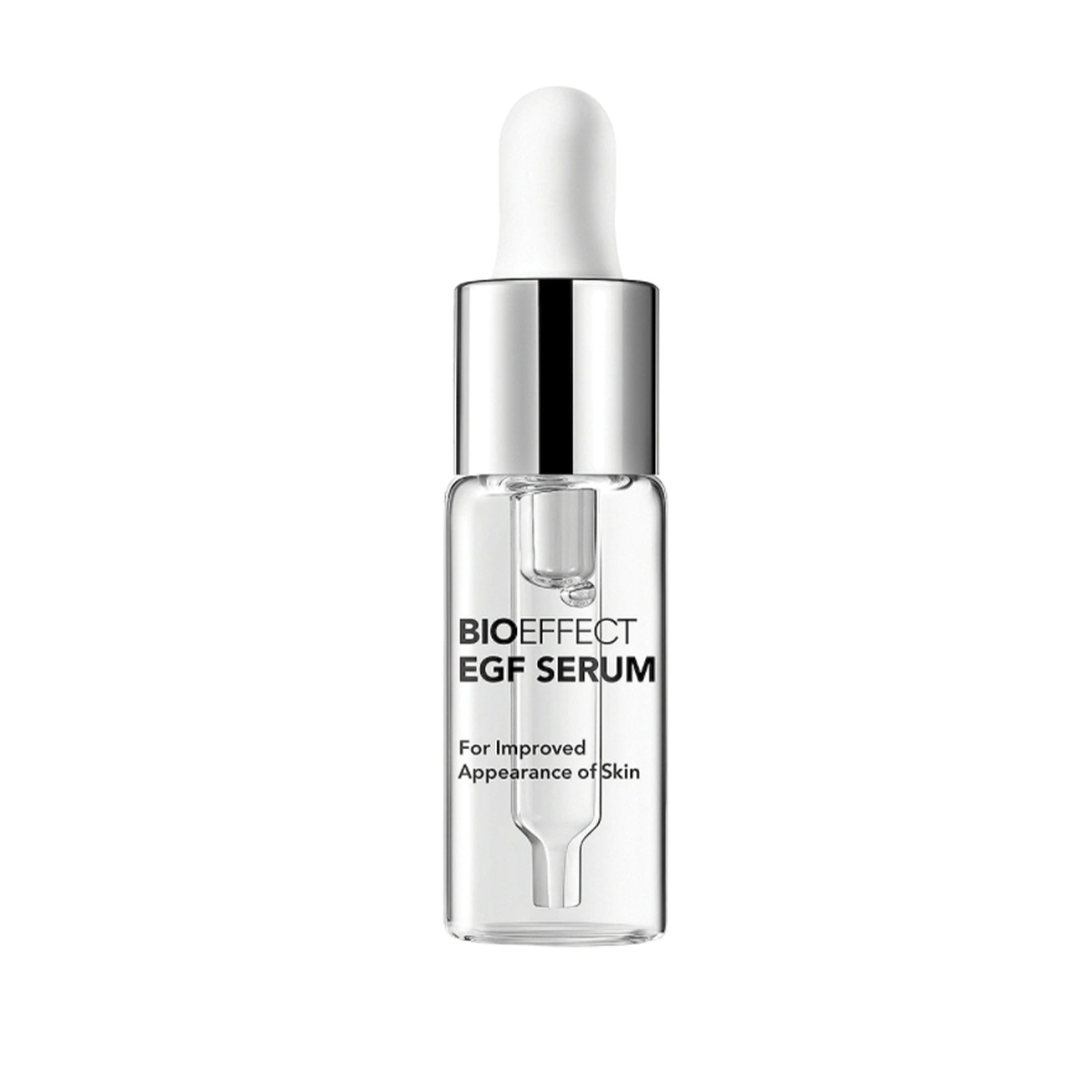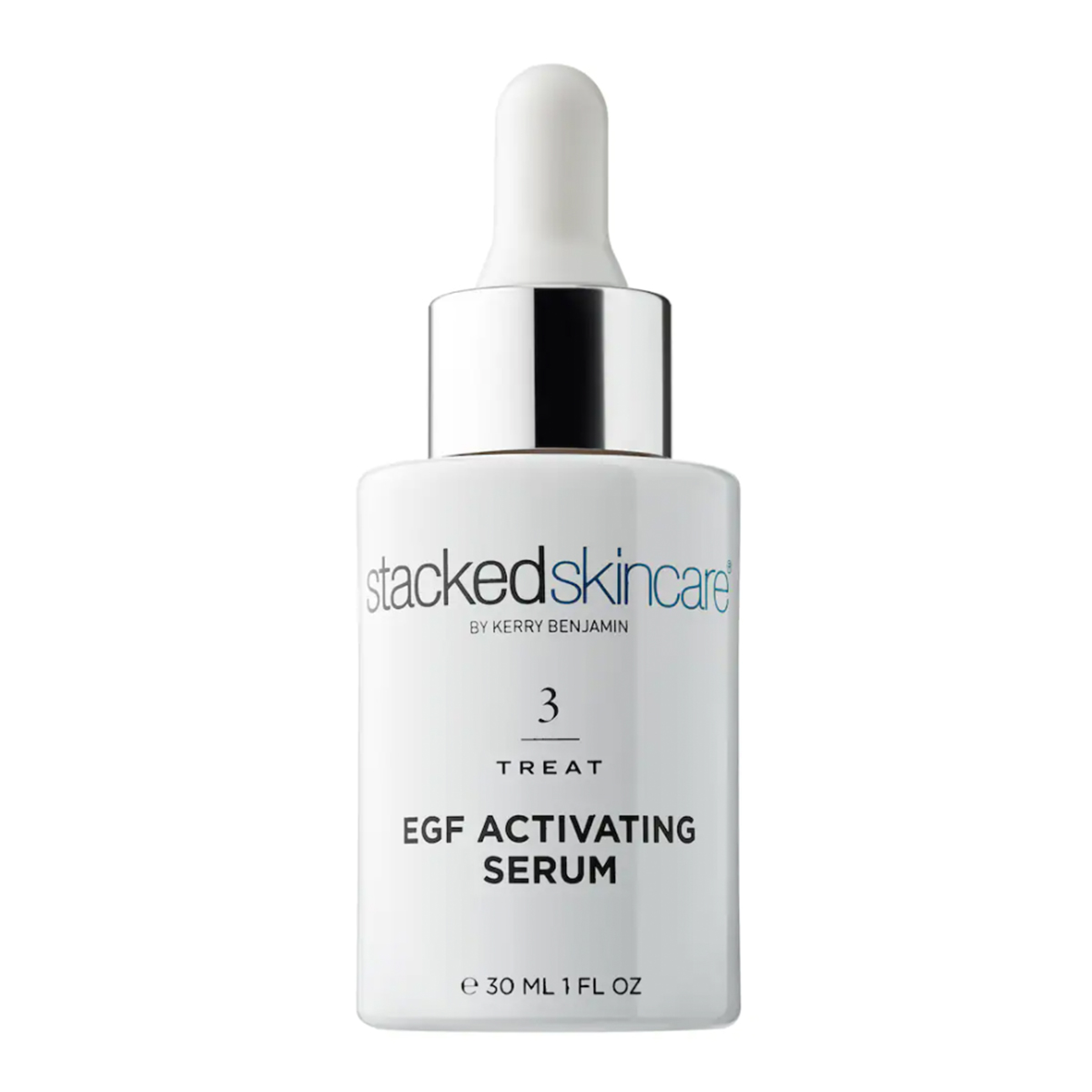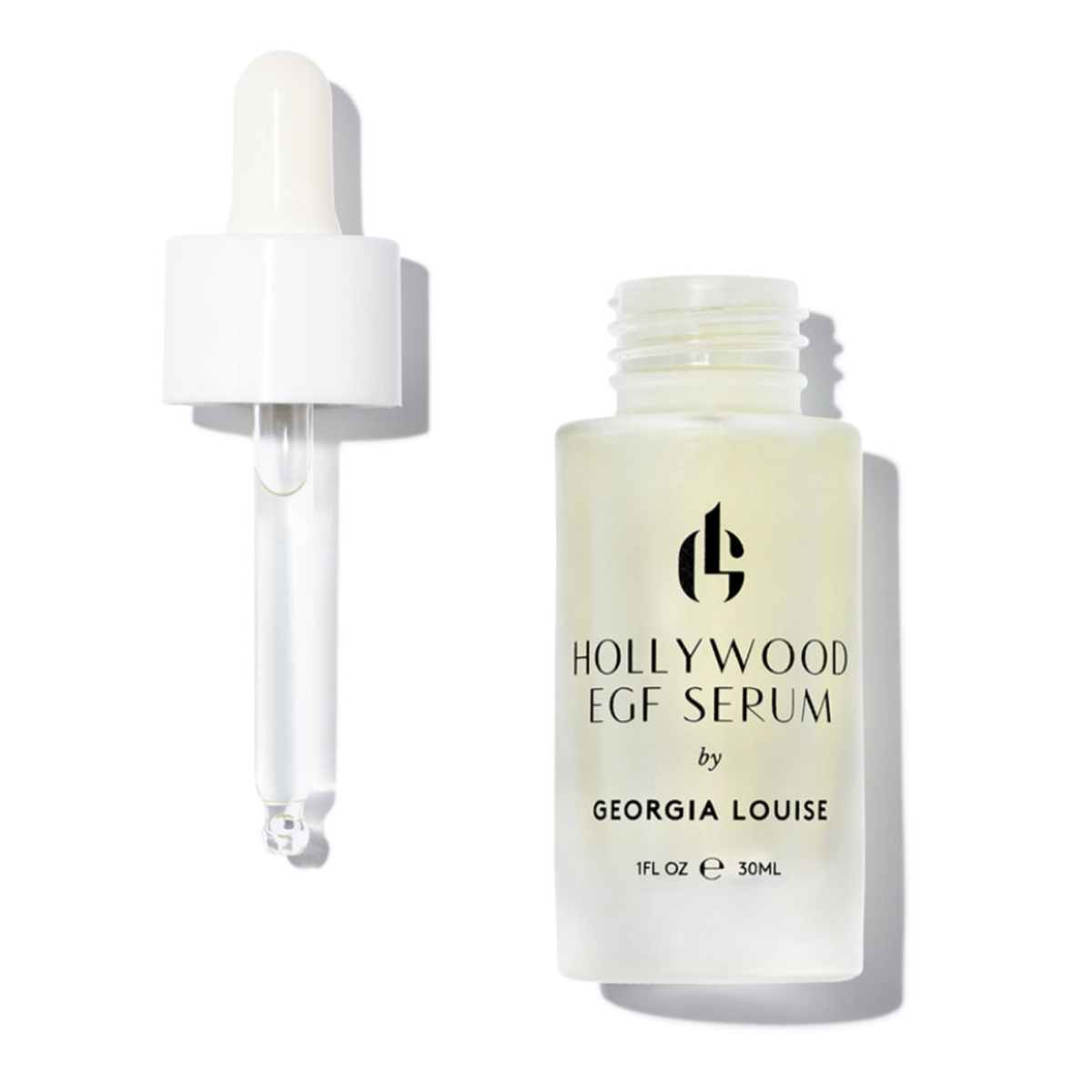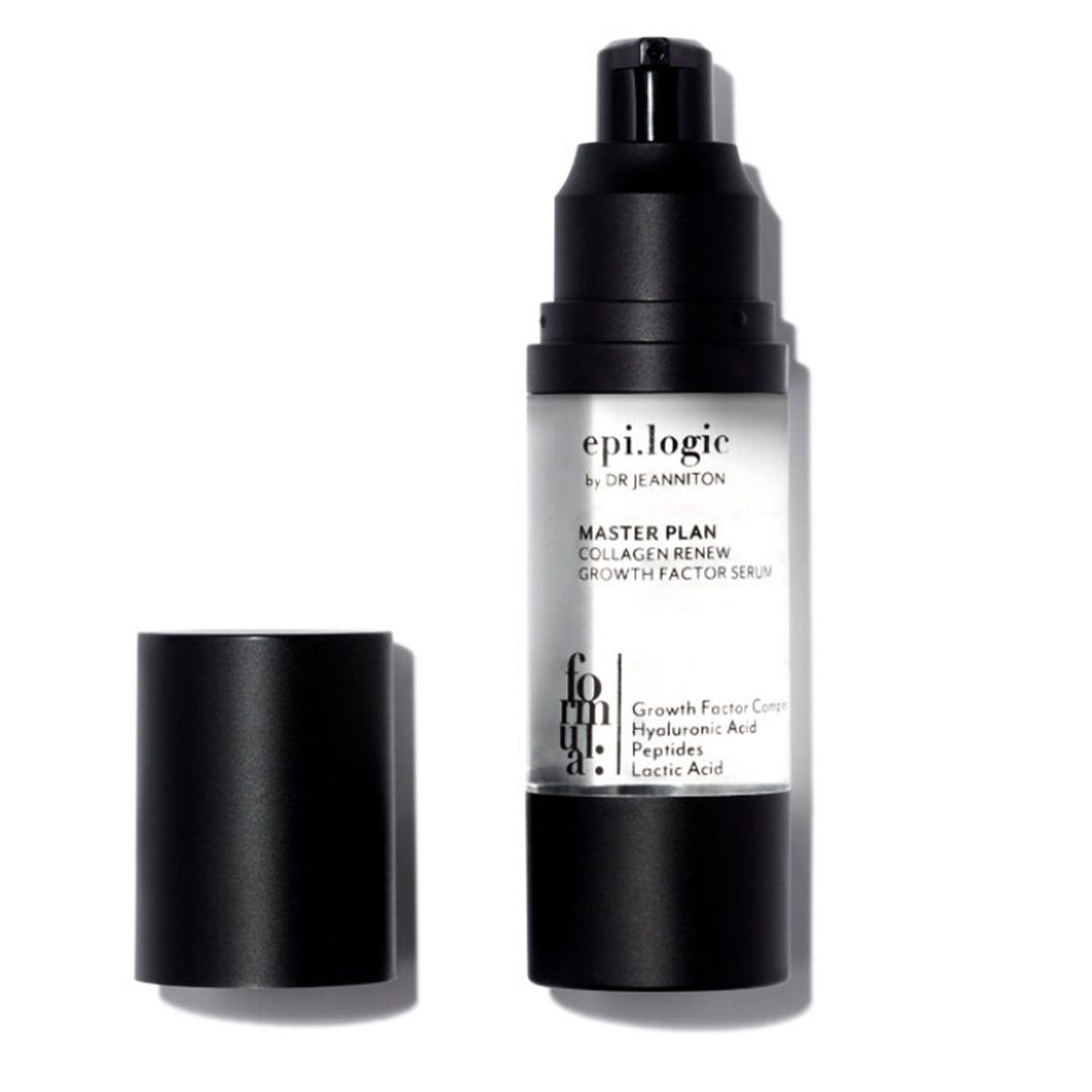This Growth Factor Serum Saved My Damaged 40-Year-Old Skin
Anyone who is serious about skincare knows the risk that can come with switching up your routine with new products. There is always the potential for a bad reaction or irritation, but usually, the benefits are worth the risk. So what happens when it all ends up going south and you’re left with a skincare lover’s worst nightmare, aka a damaged skin barrier? In my case, I took another risk and added a new product to the mix: an epidermal growth factor serum. Spoiler: I am now a simp for growth factors.

Photo:
@marielodiandreakosWhile epidermal growth factors, aka EGF, may not have the buzzy recognition that other skincare ingredients like retinol does, they have been studied extensively, especially in regard to their potential reparative and wound healing benefits. Scientists Rita Levi-Montalcini and Stanley Cohen first discovered growth factors way back in the 1950s, which subsequently earned them a Nobel Prize in 1986.
“Growth factors are naturally occurring, potent proteins that fight against aging and maintain epidermal health,” explains Mona Gohara, a board-certified dermatologist based in Connecticut. “They are responsible for supporting the repair of damaged skin, making components that provide firmness and elasticity to the skin while helping to maintain skin’s protective functions.” As we get older, we begin to produce fewer growth factors, resulting in a massive reduction of collagen and elastin, which then leads to fine lines and wrinkles, hyperpigmentation, sagging (basically, all of those age-related concerns that some of us try to avoid). Luckily, there are some great topical growth factor products that are meant to address all of that and more.

Photo:
@aimeesongGrowth factors were not exactly new to me. I had used a couple of them in the past but didn’t make an effort to use them regularly until I had a recent mishap involving acids. In an attempt to treat the pigmentation I had that was left over from acne scarring, I began to use glycolic acid nightly, in addition to the vitamin C I was already using every few days. I figured that as long as I didn’t use them at the same time, I would probably be all right. In the words of Julia Roberts in Pretty Woman: Big mistake. Big. Huge.
At first, I thought the breakouts on my chin were a result of maskne or a hormonal breakout. But they wouldn’t go away. When the pimples on one end of my jawline started to disappear, a cluster of new zits would pop up on the other side. Then, when those began to heal, the others would return. It was like this for weeks. That’s when I realized it was probably my cocktail of vitamin C and glycolic serums giving me all this trouble. Even if I wasn’t using them together, it was too much for my skin to handle. I went too hard! I immediately stopped using the products and stuck to a sensitive wash and light moisturizer for a week to let my skin calm down. As fate would have it, I was scheduled for my first facial in over a year: the DiamondGlow facial, which used SkinMedica products, including the brand’s famed TNS Advanced+ Serum ($236).
I decided to start using the serum twice a day without thinking about it too much. But after a couple of weeks, I noticed that the rough texture on my skin (from the breakouts) disappeared and the scars began to lighten. It was even better after a month. I knew it had to be that serum. Michelle Henry, a board-certified dermatologist based in NYC, told me that growth factors work well with most skin types but are especially beneficial for a woman of my age (40).
“You want stimulation of collagen, you want to stimulate elastin. … Those are all the things that give our skin its strength and its elasticity and will give our skin its lift,” she says. Both Henry and Gohara recommend SkinMedica’s iconic TNS serum to their patients, and Gohara says that you can usually see results in two weeks, with improvement continuing through 24 weeks, which tracks with my own experience. Henry also says that with PRP, or platelet-rich therapy, we're trying to harness our body’s natural growth factors: “That’s essentially what PRP is.”

Photo:
@emmahoareauWhile the dermatologists I spoke to were all proponents of growth factors, it is a controversial topic. Some derms question whether topical growth factors can be effective without delivery through micro-needling or laser resurfacing, claiming their molecules are too large to effectively penetrate the top layer of the epidermis. There is also concern that because growth factors are mitogenic, theoretically, they could cause cancer cells to replicate, however, there hasn’t been any evidence pointing to topical growth factors doing that.
“Growth factors are molecules, enzymes, and are particular pathways that contribute to cell proliferation, or cellular growth and turnover. The reason there is a little controversy is because unchecked cellular growth is, by definition, cancer,” explains Henry. “So there was always this concern, especially in the early iterations, that if we’re using these growth factors, could it simulate skin cancer. Now, a lot of formulations have been changed, and we better understand whatever growth factors are in this particular serum or cream, and what pathways they activate, but prior to that, we didn’t.”
There’s also the issue of where the growth factor can come from. In 2018, Sandra Bullock and Cate Blanchett caught flack for talking about a $650 “penis facial” they had gotten at celebrity aesthetician Georgia Louise’s spa. The growth factors used in the serum were “derived from the progenitor cells of the human fibroblast taken from Korean newborn baby foreskin.” SkinMedica’s serum also uses growth factor proteins that are lab-created but were derived from the stem cells of a single neonatal foreskin over 20 years ago. But if you’re curious about growth factors and would rather not use anything connected to human cells, opt for a plant-based product.
For example, brands such as Bioeffect and Cellular MD both use EGF derived from barley.
“Cellular MD's skincare line is different from other skincare lines because it uses a combination of DNA repair enzymes, niacinamide, and human epidermal growth factor bio-engineered from barley in our patented formulation,” explains Ronald Moy, a Beverly Hills–based facial plastic surgeon and the founder of Cellular MD. He says that Cellular MD’s formulation has shown improvement on acne scars and even eye bags, which, like, sign me up immediately. Overall, I have to say I’m impressed with how my skin is looking so far after using the TNS serum, but I’m also curious about using a plant-based one regularly and comparing the two. Curious to try a growth factor serum for yourself? Shop more of our top recommendations below!
Up next, This Is What I Did to Undo the Years of Sun Damage on My Cleavage
This article was originally published at an earlier date and has been updated.
- Explore More:
- beauty
- Skin
- Skincare
- Anti-aging
- Serum
- Anti-aging serum
- Products











